MaryAnn Bernal's Blog, page 194
February 25, 2015
New study claims gerbils, not rats, responsible for bringing plague to Europe
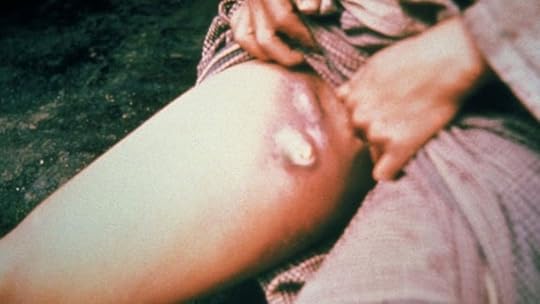 Bubonic plague, the most common form, is associated with painful, swollen lymph nodes, called buboes as shown above. After an incubation period of two to six days, symptoms appear, including severe malaise, headache, shaking chills and fever. P (CDC)
Bubonic plague, the most common form, is associated with painful, swollen lymph nodes, called buboes as shown above. After an incubation period of two to six days, symptoms appear, including severe malaise, headache, shaking chills and fever. P (CDC)For hundreds of years, the arrival of the bubonic plague in Europe in the mid-14th century has been blamed on rats. However, a new study released this week has put a different rodent under suspicion: gerbils.
Scientists at the University of Oslo in Norway have claimed that that the deadly disease was repeatedly brought to Europe from Asia via trade routes such as the Silk Road, and with gerbils, not rats as the carriers.
"If we're right," study co-author Nils Christian Stenseth told the BBC, "we'll have to rewrite that part of history."
The study examined over 7,700 tree ring records that revealed climate information about Europe during that period. They found that outbreaks in Europe occurred approximately 15 years after a spell of wet weather and warmer temperatures in Asia, which would have bolstered the gerbil and flea populations. By contrast, the timing of the outbreaks in Europe did not appear to coincide with any weather pattern on the continent.
Previously, black rats who had stowed away on merchant ships were thought to have enabled the plague to establish itself in Europe, with fleas spreading the bacteria by jumping from infected rat to humans. However, Stenseth told NPR that according to that theory, rats and their fleas should still be spreading plague in European cities today, when in fact, it has been nearly 300 years since a major outbreak.
The study theorizes that fleas carrying the plague bacterium jumped from gerbils to pack animals and humans, some of whom were traders who brought the disease to Europe. The next step is to analyze the DNA of plague bacteria, which can be found in the skeletons of its victims. If the Oslo theory is correct, the bacterial DNA would vary widely across each outbreak, as the disease would have likely changed each time it entered Europe.
Historians have estimated that the first outbreak of plague in medieval Europe, between 1346 and 1353, killed between 75 million and 200 million people, at least a third of the continent's population.
Click for more from the BBC.
Fox News
Published on February 25, 2015 06:53
History Trivia - Robert Devereux, second Earl of Essex, beheaded for high treason
February 25
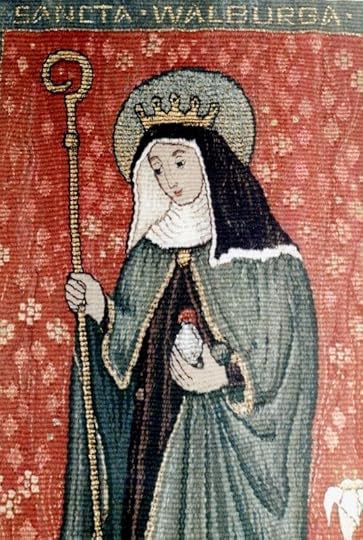
777 Saint Walburga (Anglo-Saxon abbess and saint), patroness of sailors because her prayers calmed a stormy sea, and thereby saving a ship caught in its wake, died.
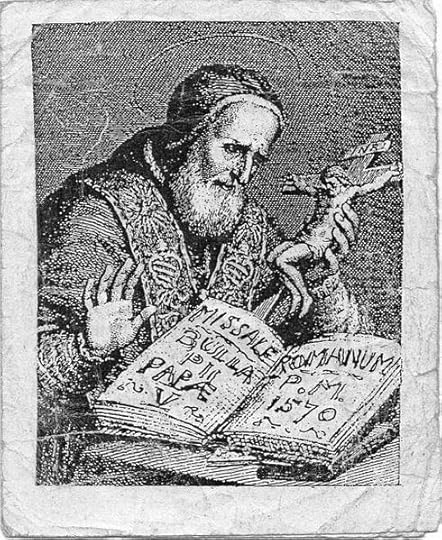
1570 Elizabeth I was declared a heretic by Pope Pius V.

1601 Robert Devereux, the second Earl of Essex and former favorite of Elizabeth I, was beheaded in the Tower of London for high treason.

777 Saint Walburga (Anglo-Saxon abbess and saint), patroness of sailors because her prayers calmed a stormy sea, and thereby saving a ship caught in its wake, died.

1570 Elizabeth I was declared a heretic by Pope Pius V.

1601 Robert Devereux, the second Earl of Essex and former favorite of Elizabeth I, was beheaded in the Tower of London for high treason.
Published on February 25, 2015 02:00
February 24, 2015
The Stafford Dog Club Presents "Behold!"; an all dog cast play portraying the story of Birth of Christ as told by Luke.
 Stafford Dog ClubRuritan Building
Stafford Dog ClubRuritan Building2945 Mountain View Road, Stafford, VA 22556 We are a group of dog lovers that meet to socialize, learn about dog behavior and work with our trainer. Some of our dogs go on to compete, whilst others enjoy the social life and friendships they have. Learn more about star Duna on Amazon - "I'm a Rhodesian" I’m a Rhodesian is a letter from a young Rhodesian Ridgeback to his breeder whom he calls Grandma. He tells her about his life experiences in his first year and how much he and his owner love each other. He grows from a puppy to a brave and handsome Rhodesian protecting his owner.
Published on February 24, 2015 06:27
King’s cortege procession route announced for a ceremonial procession bringing King Richard III’s mortal remains to their final resting place in the heart of Leicester.
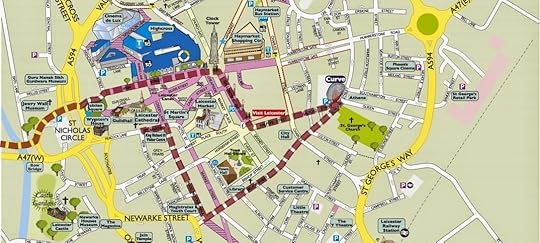
King’s cortege procession route announced
PREPARATIONS are underway for a ceremonial procession bringing King Richard III’s mortal remains to their final resting place in the heart of Leicester.
The king’s mortal remains are due to be taken from the University of Leicester to the place of his death at Bosworth Field and then on to Leicester Cathedral for his reinterment next month, stopping along the way on places both in the city and the county which would have played a role in his life and death.
As part of that, thousands of residents and businesses along the route are being informed of how the spectacular commemorations will unfold and what arrangements are being made for the once-in-a-lifetime event.
Organisers are expecting huge public interest in the procession, meaning a series of rolling road closures and special arrangements to ensure an unobstructed route through the city.
The king’s remains are being brought into the city at around 4.30pm on Sunday, March 22, coming in via the A47 to Bow Bridge – the site of the original bridge from which King Richard is believed to have ridden out to battle at Bosworth Field in 1485.
Following a short welcome to the city, the cortege will then visit the nearby medieval St Nicholas Church for a short service at 4.50pm (ticket only). It will leave there at approximately 5.15pm to travel through the city centre via High Street, the Clock Tower, Gallowtree Gate, Halford Street, Rutland Street, Pocklingtons Walk and Grey Friars.
At around 5.45pm the king’s coffin will be handed over to the care of Leicester Cathedral, where it will lie in repose until his reinterment on Thursday, March 26.
Letters are being sent out today to residents and businesses along the route, telling them of road closures, parking restrictions and other temporary arrangements needed for the procession.
A number of events and services are taking place from March 21 to March 29 across the city as part of the reinterment, which will also have implications for traffic, travel and those living and working in the city centre.
On Thursday, March 26, King Richard III will be reinterred in Leicester Cathedral in a spectacular ceremony attended by guests and media from across the world.
Finally, on Friday, March 27, the sealed tomb will be revealed to the public for the first time – an event also expected to lead to a huge number of visitors to the city.
Both events will involve temporary road closures, restrictions on waiting and parking, disruption to deliveries and the need to keep key routes around the cathedral free from street furniture and clutter.
City Mayor Peter Soulsby said: “The story of King Richard has caught the imagination of people across the world, and the events next month mean Leicester will once again be at the centre of international media attention.
“We also realise that for many people living and working near to the cathedral or the procession route, the sheer scale of such an event is going to mean disruption and changes to their normal working day.
“There will be road closures, additional security and thousands of extra people visiting the city during that time, as well as a huge media presence over that period.
“We’re writing to all residents and businesses in the city likely to be affected by this, so we can explain the arrangements for those few days and give them time to ask questions and make alternative plans if need be.
“I would hope people across the city make the most of this extraordinary occasion and help us to make it go smoothly, to create an event of which we can be justifiably proud.”
People are being asked to note that all timings are approximate.
you can read our FAQ’s about the reinterment route at www.leicester.gov.uk/reinterment
King Richard in Leicester
Published on February 24, 2015 05:44
Vikings Were 'Global Investors,' Not Just Pillagers
by Steven Ashby
Live Science
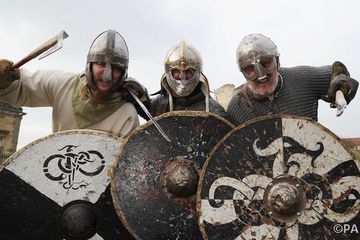
 “Yes it’s a new thing we’re trying out, it’s called ‘international
“Yes it’s a new thing we’re trying out, it’s called ‘international trade’.”
trade’.”
Credit: Anna Gowthorpe/PA
This article was originally published on The Conversation . The publication contributed this article to Live Science's Expert Voices: Op-Ed & Insights .
The connections between technology, urban trading , and international economics which have come to define modern living are nothing new. Back in the first millennium AD, the Vikings were expert at exploring these very issues.
, and international economics which have come to define modern living are nothing new. Back in the first millennium AD, the Vikings were expert at exploring these very issues.
While the Vikings are gone their legacy is remembered, such as at the annual Jorvik Viking Festival in York. The Norsemen’s military prowess and exploration are more often the focus of study, but of course the vikings were more than just bloodthirsty pirates: they were also settlers, landholders, farmers, politicians, and merchants.
Between the 8th and 11th century (the Viking Age), Europe saw significant technological advances, not all of them Scandinavian – the Anglo-Saxons, Frisians and Franks were equal players. To understand these changes, we have to see them in the context of increasing contact between Scandinavia, the British Isles, and continental Europe – in which the Vikings were key players. Technological innovations such as the potter’s wheel and the vertical loom transformed not only the types of products being manufactured in Viking settlements, but also the scale on which they were produced.
Technological developments emerged as people came together in growing coastal trading centres and market towns. The world was rapidly becoming more joined-up during this period than at any time since the heyday of the Roman Empire. Trade fostered international links across the North Sea, Baltic and beyond, and similar developments were happening as far afield as the Middle East, Africa, and Asia. This was a period in which people began to live and work in entirely new ways, and technological change was both a cause and an effect of this.
fostered international links across the North Sea, Baltic and beyond, and similar developments were happening as far afield as the Middle East, Africa, and Asia. This was a period in which people began to live and work in entirely new ways, and technological change was both a cause and an effect of this.
While many Viking artefacts of the period are familiar, the complex methods that lay behind their manufacture are less well-known. Each involved a specialised set of skills, tools and raw materials, which meant craftspeople were reliant not only on a market for sale, but also on a well-organised supply chain. This is why the development of specialist crafts, of growing urbanisation, and of long-distance trade are intimately connected.
The Vikings were expert shipbuilders and navigators, and while evidence for their shipwrights' skills survives to the present day, there is little detail of how they navigated their huge journeys. What is clear is that between the 8th and 11th century, viking shipping underwent significant development, beginning with the appearance of the sail, and leading to the development not only of specialist warships, but also of prototypes for the large cargo vessels that would come to dominate the waters of later medieval Europe. But Viking technology had more to offer than ships and swords.
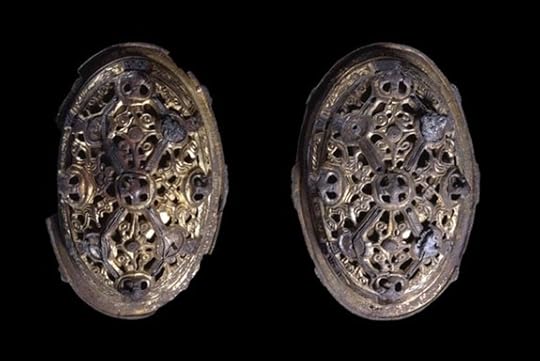 [image error]
[image error]
 Viking brooches were ornate, beautiful, and mass-produced.
Viking brooches were ornate, beautiful, and mass-produced.
Credit: British MuseumView full size image BroochesAmong the most recognisable Viking artefacts are their brooches. Long studied by archaeologists, they signified gender, status, and ethnicity. Work is ongoing to reveal the advanced technology used in their manufacture.
Evidence for brooch manufacture in Viking towns includes the remains of moulds and crucibles. The crucibles are often found complete with residues of the metals melted down in them. Brooches were cast by pouring this metal into moulds, which were produced by pressing existing pieces of jewellery or lead models into clay, followed by minor artistic modification. This resulted in a sort of mass-production. As this craft was dependent on high-quality brass ingots from continental Europe, specialist jewellery production centres arose at ports associated with long-distance trade routes.
Glass bead jewelleryStrings of ornate glass beads are another common sight in Viking museum displays. Beads were made in Scandinavian towns by carefully manipulating coloured glass as it melted. Waste deposits prove that the raw glass used in this process came in the form of coloured tesserae : small, square blocks from the Mediterranean, where they were used to produce mosaics. Whether they were bought and sold in south-eastern Europe, before travelling west, or whether they were ripped from Byzantine churches on raids in the region is unclear.
CombmakingAnimal bones were among the most important materials in pre-modern technology: a durable, flexible, readily available raw material used for everything from knife handles to ice skates. Many such objects could be made quickly, with little training – but not the Vikings' hair combs.
These large, ornate, over-engineered objects took days to manufacture and required a trained hand. Specialised tools such as saws, rasps, and polishers were needed, and deer antler particularly was the material of choice.
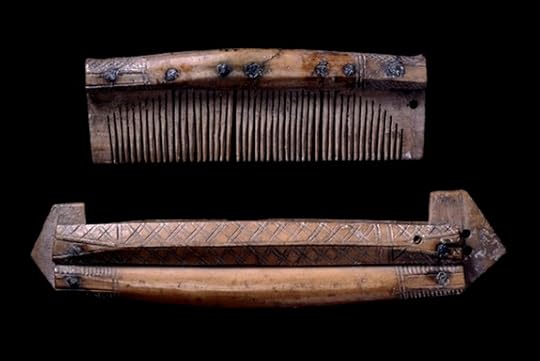 [image error]
[image error]
 Viking combs ranged from the practical to the ornate.
Viking combs ranged from the practical to the ornate.
Credit: British MuseumView full size imageCombs of this type go back to the Late Roman period, but they really came into their own in the Viking Age, where they became a symbol of status and aspiration. Combmakers tended to work in towns, where they had access to periodic markets and a supply network that brought in deer antler from the local countryside, and reindeer antler from the Arctic north. They may also have moved around from town to town, in order to maximise their sales. It’s a great example of the way town, countryside, and long-distance travel were tied together in order to support the technology that was important to the everyday life of Viking-Age people.
These examples of craftmanship and technical tool work – and there are many more – demonstrate that the Vikings should be seen as more than just raiders, and more more than simple traders or merchants too. With their outward-looking society and cutting edge techniques, they were among the earliest investors in global technologies in a post-Roman world that, even then, was increasingly international. And today, as a modern recreation of a Viking vessel embarks for the first ever Viking exhibition in China, it’s clear their appeal is truly global.
technologies in a post-Roman world that, even then, was increasingly international. And today, as a modern recreation of a Viking vessel embarks for the first ever Viking exhibition in China, it’s clear their appeal is truly global.
This article was originally published on The Conversation. Read the original article. Follow all of the Expert Voices issues and debates — and become part of the discussion — on Facebook, Twitter and Google +. The views expressed are those of the author and do not necessarily reflect the views of the publisher. This version of the article was originally published on Live Science.
Live Science

 “Yes it’s a new thing we’re trying out, it’s called ‘international
“Yes it’s a new thing we’re trying out, it’s called ‘international trade’.”
trade’.”Credit: Anna Gowthorpe/PA
This article was originally published on The Conversation . The publication contributed this article to Live Science's Expert Voices: Op-Ed & Insights .
The connections between technology, urban trading
 , and international economics which have come to define modern living are nothing new. Back in the first millennium AD, the Vikings were expert at exploring these very issues.
, and international economics which have come to define modern living are nothing new. Back in the first millennium AD, the Vikings were expert at exploring these very issues.While the Vikings are gone their legacy is remembered, such as at the annual Jorvik Viking Festival in York. The Norsemen’s military prowess and exploration are more often the focus of study, but of course the vikings were more than just bloodthirsty pirates: they were also settlers, landholders, farmers, politicians, and merchants.
Between the 8th and 11th century (the Viking Age), Europe saw significant technological advances, not all of them Scandinavian – the Anglo-Saxons, Frisians and Franks were equal players. To understand these changes, we have to see them in the context of increasing contact between Scandinavia, the British Isles, and continental Europe – in which the Vikings were key players. Technological innovations such as the potter’s wheel and the vertical loom transformed not only the types of products being manufactured in Viking settlements, but also the scale on which they were produced.
Technological developments emerged as people came together in growing coastal trading centres and market towns. The world was rapidly becoming more joined-up during this period than at any time since the heyday of the Roman Empire. Trade
 fostered international links across the North Sea, Baltic and beyond, and similar developments were happening as far afield as the Middle East, Africa, and Asia. This was a period in which people began to live and work in entirely new ways, and technological change was both a cause and an effect of this.
fostered international links across the North Sea, Baltic and beyond, and similar developments were happening as far afield as the Middle East, Africa, and Asia. This was a period in which people began to live and work in entirely new ways, and technological change was both a cause and an effect of this.While many Viking artefacts of the period are familiar, the complex methods that lay behind their manufacture are less well-known. Each involved a specialised set of skills, tools and raw materials, which meant craftspeople were reliant not only on a market for sale, but also on a well-organised supply chain. This is why the development of specialist crafts, of growing urbanisation, and of long-distance trade are intimately connected.
The Vikings were expert shipbuilders and navigators, and while evidence for their shipwrights' skills survives to the present day, there is little detail of how they navigated their huge journeys. What is clear is that between the 8th and 11th century, viking shipping underwent significant development, beginning with the appearance of the sail, and leading to the development not only of specialist warships, but also of prototypes for the large cargo vessels that would come to dominate the waters of later medieval Europe. But Viking technology had more to offer than ships and swords.
 [image error]
[image error]
 Viking brooches were ornate, beautiful, and mass-produced.
Viking brooches were ornate, beautiful, and mass-produced.Credit: British MuseumView full size image BroochesAmong the most recognisable Viking artefacts are their brooches. Long studied by archaeologists, they signified gender, status, and ethnicity. Work is ongoing to reveal the advanced technology used in their manufacture.
Evidence for brooch manufacture in Viking towns includes the remains of moulds and crucibles. The crucibles are often found complete with residues of the metals melted down in them. Brooches were cast by pouring this metal into moulds, which were produced by pressing existing pieces of jewellery or lead models into clay, followed by minor artistic modification. This resulted in a sort of mass-production. As this craft was dependent on high-quality brass ingots from continental Europe, specialist jewellery production centres arose at ports associated with long-distance trade routes.
Glass bead jewelleryStrings of ornate glass beads are another common sight in Viking museum displays. Beads were made in Scandinavian towns by carefully manipulating coloured glass as it melted. Waste deposits prove that the raw glass used in this process came in the form of coloured tesserae : small, square blocks from the Mediterranean, where they were used to produce mosaics. Whether they were bought and sold in south-eastern Europe, before travelling west, or whether they were ripped from Byzantine churches on raids in the region is unclear.
CombmakingAnimal bones were among the most important materials in pre-modern technology: a durable, flexible, readily available raw material used for everything from knife handles to ice skates. Many such objects could be made quickly, with little training – but not the Vikings' hair combs.
These large, ornate, over-engineered objects took days to manufacture and required a trained hand. Specialised tools such as saws, rasps, and polishers were needed, and deer antler particularly was the material of choice.
 [image error]
[image error]
 Viking combs ranged from the practical to the ornate.
Viking combs ranged from the practical to the ornate.Credit: British MuseumView full size imageCombs of this type go back to the Late Roman period, but they really came into their own in the Viking Age, where they became a symbol of status and aspiration. Combmakers tended to work in towns, where they had access to periodic markets and a supply network that brought in deer antler from the local countryside, and reindeer antler from the Arctic north. They may also have moved around from town to town, in order to maximise their sales. It’s a great example of the way town, countryside, and long-distance travel were tied together in order to support the technology that was important to the everyday life of Viking-Age people.
These examples of craftmanship and technical tool work – and there are many more – demonstrate that the Vikings should be seen as more than just raiders, and more more than simple traders or merchants too. With their outward-looking society and cutting edge techniques, they were among the earliest investors in global
 technologies in a post-Roman world that, even then, was increasingly international. And today, as a modern recreation of a Viking vessel embarks for the first ever Viking exhibition in China, it’s clear their appeal is truly global.
technologies in a post-Roman world that, even then, was increasingly international. And today, as a modern recreation of a Viking vessel embarks for the first ever Viking exhibition in China, it’s clear their appeal is truly global.This article was originally published on The Conversation. Read the original article. Follow all of the Expert Voices issues and debates — and become part of the discussion — on Facebook, Twitter and Google +. The views expressed are those of the author and do not necessarily reflect the views of the publisher. This version of the article was originally published on Live Science.
Published on February 24, 2015 05:35
History Trivia - King Aethelbehrt - first Christian king of England dies
February 24
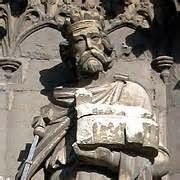
616 King Aethelbehrt of Kent died. Aethelbehrt was the first Christian king of England and was converted by St. Augustine of Canterbury.
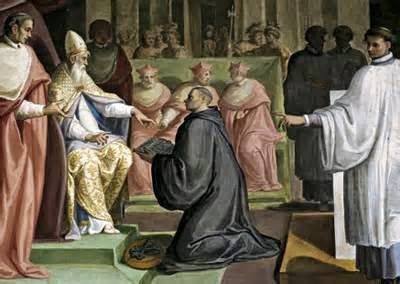
786 Pepin the Short of Gaul died. His dominions were divided between his sons Charles (Charlemagne) and Carloman.
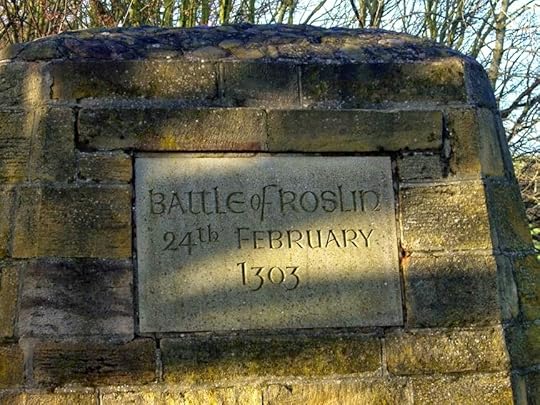
1303 The Scots defeated the English at the Battle of Roslin, the First War for Scottish Independence

616 King Aethelbehrt of Kent died. Aethelbehrt was the first Christian king of England and was converted by St. Augustine of Canterbury.

786 Pepin the Short of Gaul died. His dominions were divided between his sons Charles (Charlemagne) and Carloman.

1303 The Scots defeated the English at the Battle of Roslin, the First War for Scottish Independence
Published on February 24, 2015 00:30
February 23, 2015
History Trivia - Johannes Gutenberg prints 1st book - Bible
February 23
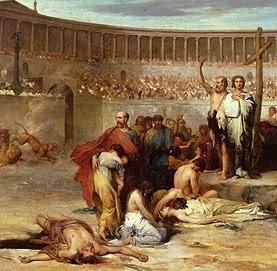
303 Roman Emperor Diocletian ordered a general persecution of the Christians.
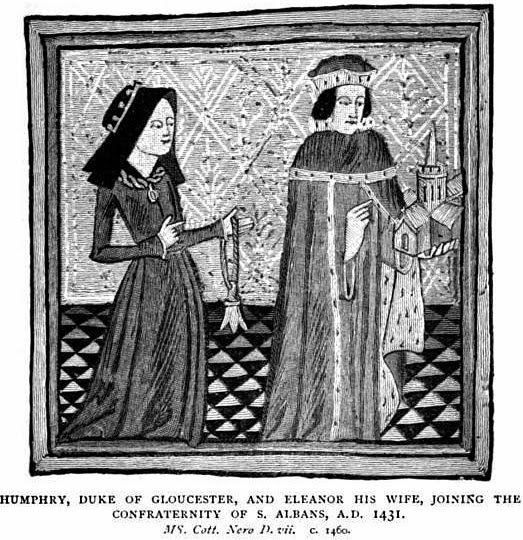
1447 Humphrey Plantagenet, Duke of Gloucester and fourth son of Henry IV, brother of Henry V, died.
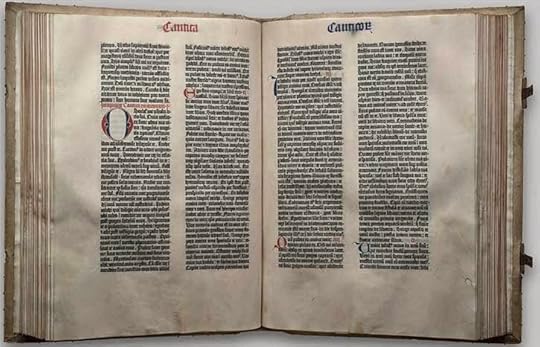
1455 Johannes Gutenberg prints 1st book, Bible (estimated date).

303 Roman Emperor Diocletian ordered a general persecution of the Christians.

1447 Humphrey Plantagenet, Duke of Gloucester and fourth son of Henry IV, brother of Henry V, died.

1455 Johannes Gutenberg prints 1st book, Bible (estimated date).
Published on February 23, 2015 02:00
February 22, 2015
History Trivia - Battle of Cassel - Arnulf III killed
February 22
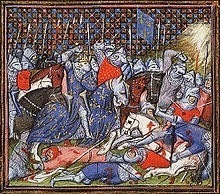
1071 Battle of Cassel: Robert I the Frisian defeated Arnulf III who was killed in the battle. Robert became count of Flanders and ruled until 1093. 1
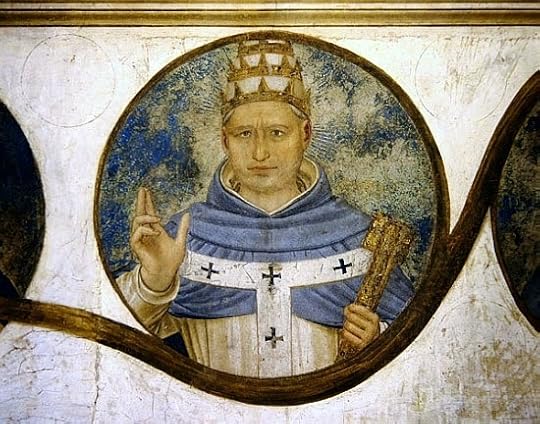
276 Innocent V was crowned Roman Catholic pope. He is noted for his commentaries on the Pauline epistles (Letters of St. Paul - 13 New Testament books).
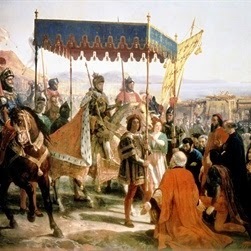
1495 King Charles VIII of France entered Naples to claim the city's throne.

1071 Battle of Cassel: Robert I the Frisian defeated Arnulf III who was killed in the battle. Robert became count of Flanders and ruled until 1093. 1

276 Innocent V was crowned Roman Catholic pope. He is noted for his commentaries on the Pauline epistles (Letters of St. Paul - 13 New Testament books).

1495 King Charles VIII of France entered Naples to claim the city's throne.
Published on February 22, 2015 01:00
February 21, 2015
History Trivia - Thomas Becket canonized
February 21
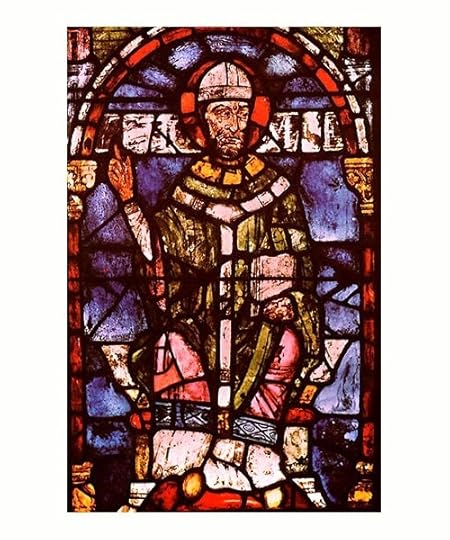
1173 Thomas Becket was canonized. The Archbishop of Canterbury, one-time friend and opponent to King Henry II of England, had been murdered less than three years earlier, and the swift canonization by Pope Alexander III was a clear message of rebuke to the king.
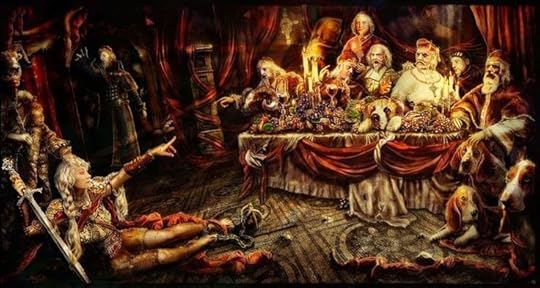
1431 Public trial of Joan of Arc began.
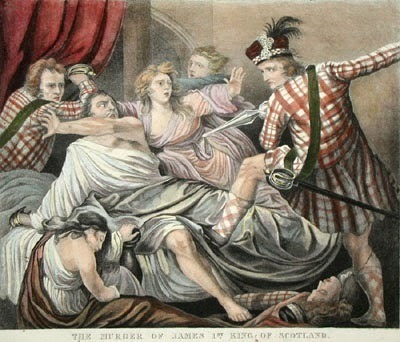
1437 King James I of Scotland was murdered in the Dominican Friary at Perth, which sparked a civil war.

1173 Thomas Becket was canonized. The Archbishop of Canterbury, one-time friend and opponent to King Henry II of England, had been murdered less than three years earlier, and the swift canonization by Pope Alexander III was a clear message of rebuke to the king.

1431 Public trial of Joan of Arc began.

1437 King James I of Scotland was murdered in the Dominican Friary at Perth, which sparked a civil war.
Published on February 21, 2015 01:30
February 20, 2015
Mr. Chuckles found Blogger and War of the Roses author Catherine Hokin while stirring the Wizard's Cauldron
 The Wizard says:
The Wizard says:Last week, on one of Twitter's many Share Days, I noticed a blog called Heroine Chic written by one Catherine Hokin. I know very little about her - as much as you do - but was extremely taken with the blog. It's wit, humour, subtext and clarity of language was notable. Once I discovered she was an author - whose book is due to be released shortly - I contacted her and arranged a natter on the Wizphone. A native of Glasgow (where this week, the iconic Kings Cafe was taken over and turned into a burger joint), I learned loads about her. Here is what she had to say.
Tell us about yourself, Catherine
Delighted to be at the cauldron - given that I once wrote a thesis on witchcraft, it seems a good place to be! I live in Glasgow, have 3 kids of varying sizes but all bigger than me and run my a business with my husband. In previous incarnations I’ve been a teacher, a political speech writer and a marketing drone.
I’m married to a Chicago boy who understands that creativity depends on regular supplies of chocolate and Honey Jack.
Read more
Published on February 20, 2015 06:23



